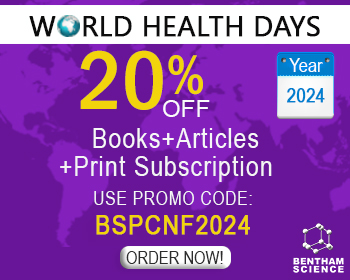Abstract
Background: Citrus fruits, especially clementines, are among the most consumed fruits in the world. Clementine consists of pulp (endocarp) and peel (epicarp) which are rich in carotenoids. After using fruit pulp, peels are usually discarded as waste; the valorization of the latter in the recovery of its beneficial components, mainly carotenoids, may seem to be important.
Objective: The main objective of this study is to determine the optimal conditions allowing the extraction of a high carotenoids yield from clementine peels.
Methods: The microwave-assisted extraction method (MAE) was applied for extraction of total carotenoids from Citrus clementina peels, and the response surface methodology (RSM) was used to investigate the influence of extraction parameters, including hexane concentration, microwave power, irradiation time, and solvent to solid ratio, on the extraction yield, then the results were modeled using a second order regression. Total carotenoids yield of clementine peel extract obtained under optimal microwave-assisted extraction conditions was compared to extracts performed using two conventional extraction methods (maceration and Soxhlet).
Results: The optimal conditions for microwave-assisted extraction were 68 % of hexane concentration using 561 W of microwave power during 7.64 min of irradiation time, 43 ml/g of solvent-tosolid ratio using two successive extractions. Under optimized conditions of microwave-assisted extraction, the recovery of carotenoid content was 186.55 μg/g dry matter (DM), which was higher than that obtained by the two conventional methods, maceration extraction (ME; 160.53 μg/g DM) and Soxhlet extraction (SE; 162.68 μg/g DM).
Conclusion: From this study, it can be concluded that microwave-assisted extraction is an efficient method for carotenoid recovery and considering its high yield in reduced time, it could be recommended for extraction of these bioactive compounds from clementine peels.
Keywords: Clementine peels, carotenoids, optimization, microwave-assisted extraction, response surface methodology, box- Benhken design.
[http://dx.doi.org/10.1016/0304-4238(94)90031-0]
[http://dx.doi.org/10.1590/S1677-04202007000400006]
[http://dx.doi.org/10.1104/pp.103.031104] [PMID: 14739348]
[http://dx.doi.org/10.1016/j.foodchem.2007.05.086]
[http://dx.doi.org/10.1201/9781420052312]
[http://dx.doi.org/10.1146/annurev-food-022811-101118] [PMID: 22385164]
[http://dx.doi.org/10.1016/j.foodchem.2017.07.099] [PMID: 28946359]
[http://dx.doi.org/10.1016/j.procbio.2010.07.009]
[http://dx.doi.org/10.1016/j.foodchem.2004.08.050]
[http://dx.doi.org/10.1186/1471-2229-9-110] [PMID: 19698121]
[http://dx.doi.org/10.1016/j.jfoodeng.2013.10.024]
[http://dx.doi.org/10.1111/jfq.12154]
[http://dx.doi.org/10.1016/j.jfoodeng.2012.10.012]
[http://dx.doi.org/10.1007/978-3-642-22144-6_145]
[http://dx.doi.org/10.1016/S0889-1575(03)00100-5]
[http://dx.doi.org/10.1016/j.trac.2013.12.011]
[http://dx.doi.org/10.1016/j.foodres.2018.05.044] [PMID: 30007701]
[http://dx.doi.org/10.1016/j.foodchem.2011.05.015] [PMID: 25212294]
[http://dx.doi.org/10.1016/j.carbpol.2011.08.029] [PMID: 34663012]
[http://dx.doi.org/10.1016/j.seppur.2014.09.008]
[http://dx.doi.org/10.1016/j.foodchem.2004.09.037]
[http://dx.doi.org/10.1016/S0021-9673(00)00440-4] [PMID: 10985534]
[http://dx.doi.org/10.1016/j.supflu.2008.02.003]
[http://dx.doi.org/10.1016/j.lwt.2008.10.002]
[http://dx.doi.org/10.1016/j.aca.2015.03.051] [PMID: 26002215]
[http://dx.doi.org/10.1016/j.tifs.2014.05.005]
[http://dx.doi.org/10.1016/j.lwt.2010.01.011]
[http://dx.doi.org/10.1016/j.foodchem.2010.03.114]
[http://dx.doi.org/10.3177/jnsv.42.553] [PMID: 9089481]
[http://dx.doi.org/10.1016/j.cnd.2018.02.002]



























